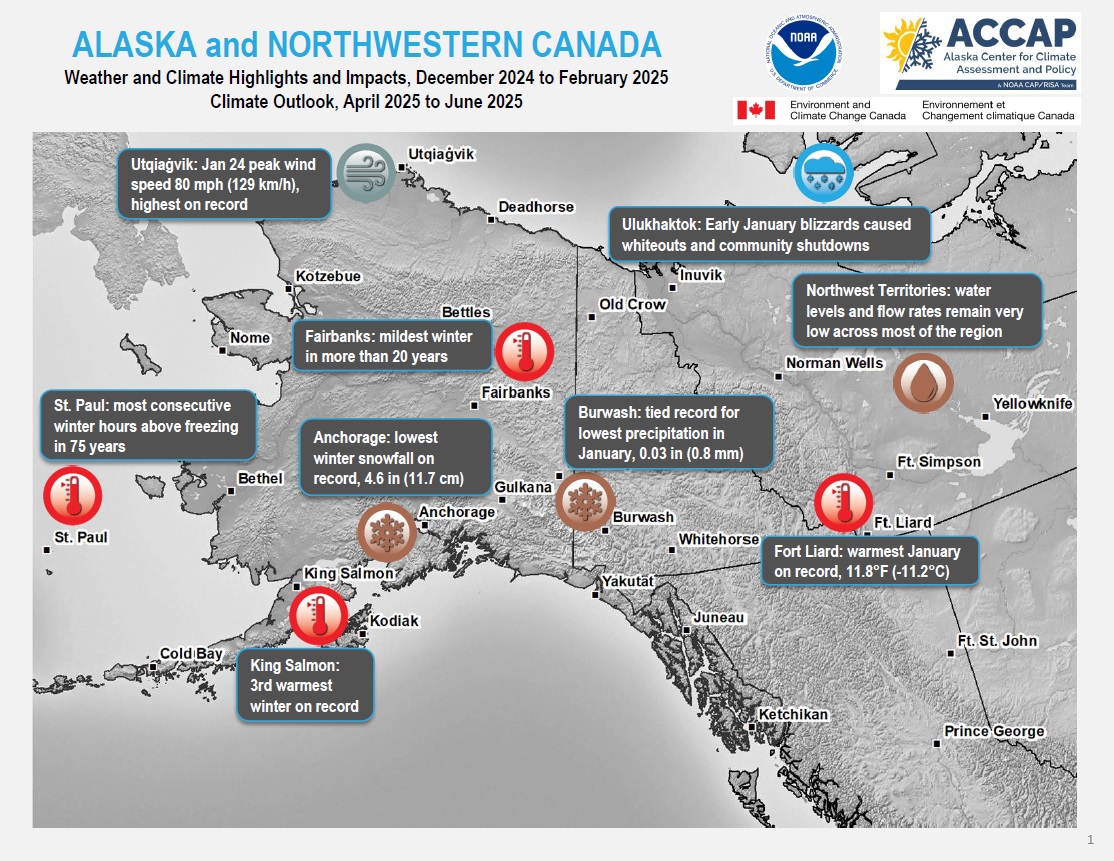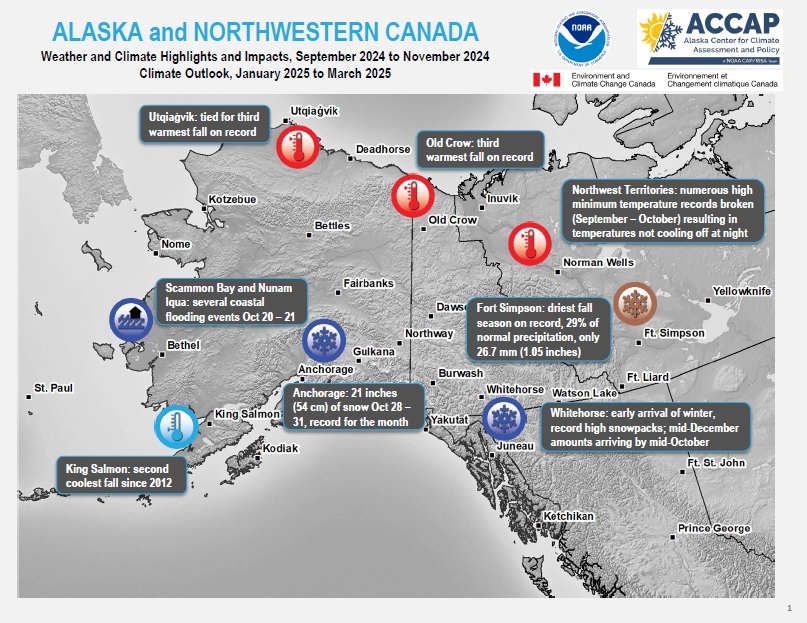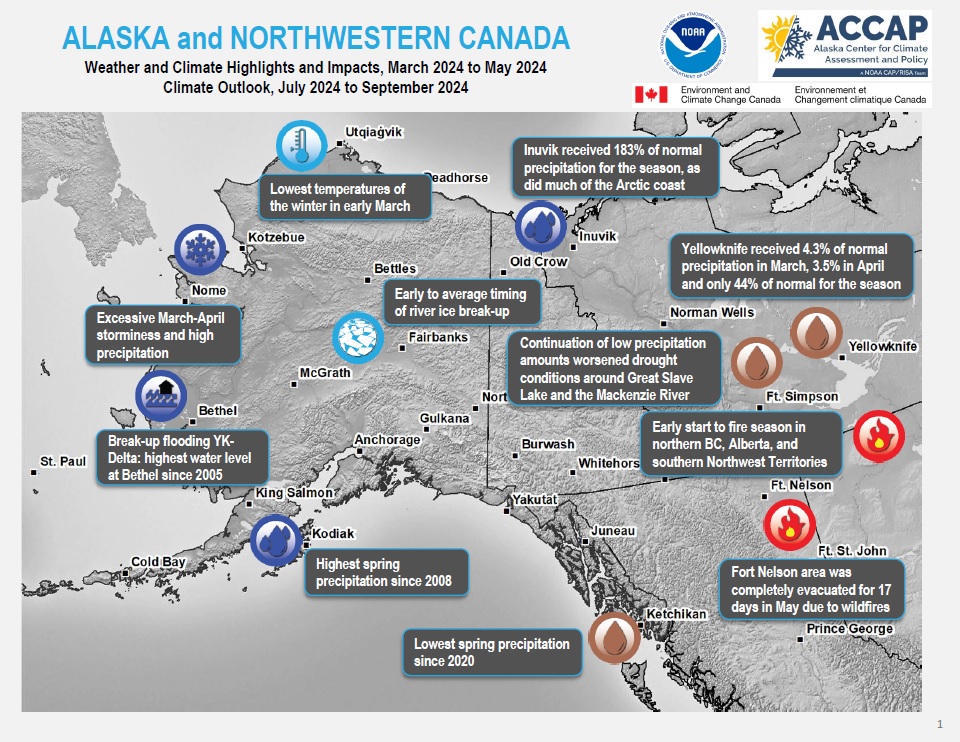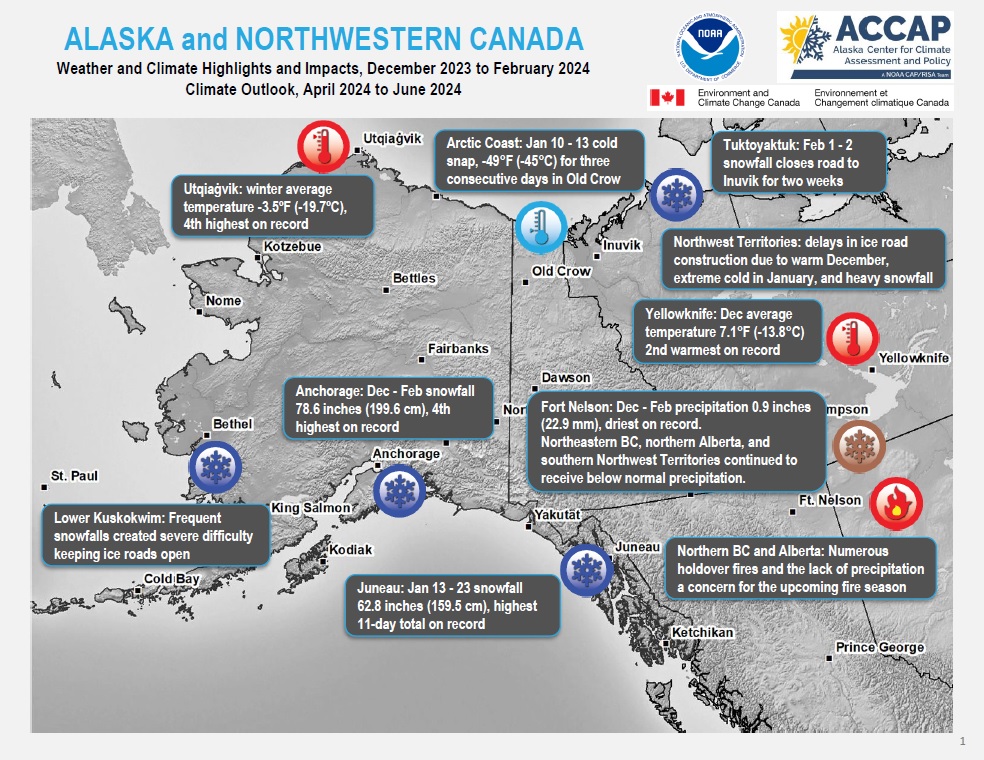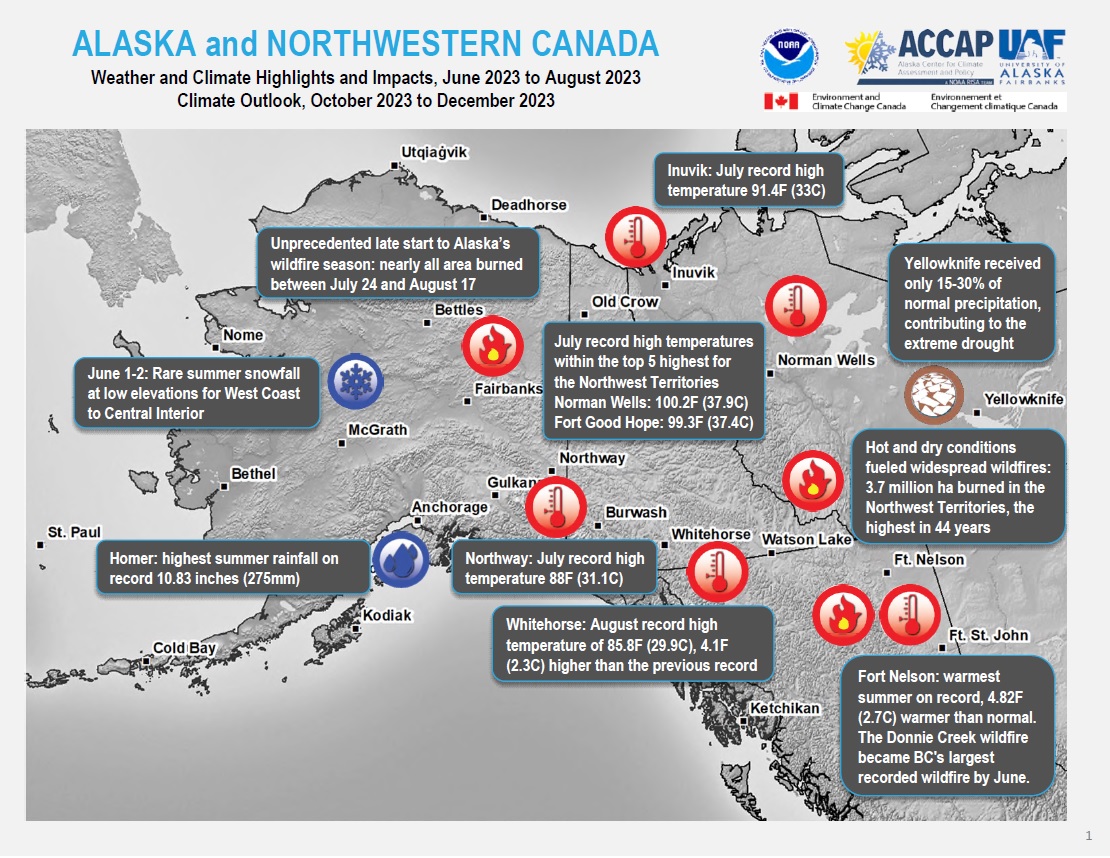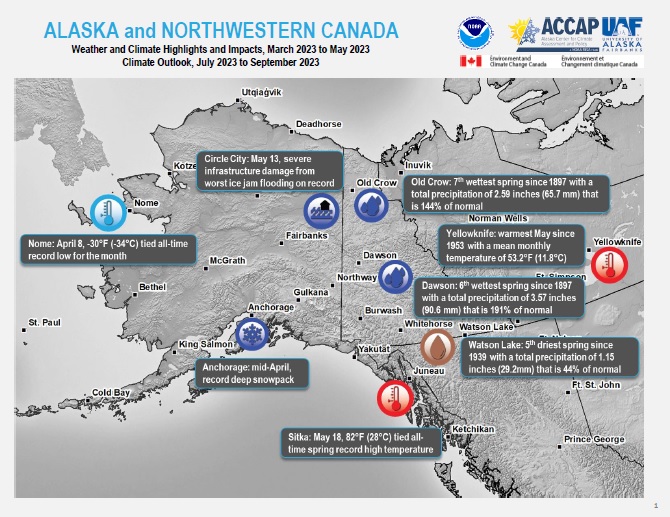Quarterly Climate Impacts and Outlook for Alaska and Northwestern Canada for December 2024–February 2025, with an outlook for April–June 2025. Dated March 2025.
ECCC, NOAA, and partners created these outlooks to inform the public about recent impacts within their respective regions. Each regional report contains easy-to-understand language, and anyone can access them through the U.S. Drought Portal.
Quarterly Climate Impacts and Outlook for Alaska and Northwestern Canada for September–November 2024, with an outlook for January–March 2025. Dated December 2024.
Environment and Climate Change Canada, NOAA, and partners created these climate outlooks to inform the public about recent climate impacts within their respective regions. Each regional report contains easy-to-understand language, and anyone can access them through the U.S. Drought Portal.
Quarterly Climate Impacts and Outlook for Alaska and Northwestern Canada for June–August 2024, with an outlook for October–December 2024. Dated September 2024.
Environment and Climate Change Canada, NOAA, and partners created these climate outlooks to inform the public about recent climate impacts within their respective regions. Each regional report contains easy-to-understand language, and anyone can access them through the U.S. Drought Portal.
Quarterly Climate Impacts and Outlook for Alaska and Northwestern Canada for March–May 2024, with an outlook for July–September 2024. Dated June 2024.
Environment and Climate Change Canada, NOAA, and partners created these climate outlooks to inform the public about recent climate impacts within their respective regions. Each regional report contains easy-to-understand language, and anyone can access them through the U.S. Drought Portal.
Quarterly Climate Impacts and Outlook for Alaska and Northwestern Canada for December 2023–February 2024, with an outlook for April–June 2024. Dated March 2024.
Environment and Climate Change Canada, NOAA, and partners created these climate outlooks to inform the public about recent climate impacts within their respective regions. Each regional report contains easy-to-understand language, and anyone can access them through the U.S. Drought Portal.
Quarterly Climate Impacts and Outlook for Alaska and Northwestern Canada for September–November 2023, with an outlook for January–March 2024. Dated December 2023.
Environment and Climate Change Canada, NOAA, and partners created these climate outlooks to inform the public about recent climate impacts within their respective regions. Each regional report contains easy-to-understand language, and anyone can access them through the U.S. Drought Portal.
Quarterly Climate Impacts and Outlook for Alaska and Northwestern Canada for June–August 2023, with an outlook for October–December 2023. Dated September 2023.
Summer was exceptionally warm across much of northwest Canada and portions of northern and eastern Alaska. For some areas, this was the warmest summer on record, as measured by the daily average temperature for the June through August period.
Quarterly Climate Impacts and Outlook for Alaska and Northwestern Canada for March–May 2023, with an outlook for July–September 2023. Dated June 2023.
NOAA’s Regional Climate Services Program and partners created these climate outlooks to inform the public about recent climate impacts within their respective regions. Each regional report contains easy-to-understand language, and anyone can access them through the Drought Portal.
Quarterly Climate Impacts and Outlook for Alaska and Northwestern Canada for December 2022–February 2023, with an outlook for April–June 2023. Dated March 2023.
NOAA’s Regional Climate Services Program and partners created these climate outlooks to inform the public about recent climate impacts within their respective regions. Each regional report contains easy-to-understand language, and anyone can access them through the Drought Portal.
Quarterly Climate Impacts and Outlook for Alaska and Northwestern Canada for September–November 2022, with an outlook for January–March 2023. Dated December 2022.
October is the heart of Fall for Southeast Alaska—typically cool and very wet, but October 2022 didn’t feel very fall-like for most areas. In fact, October was the warmest on record for a number of locations and within the top five warmest for many other places.


